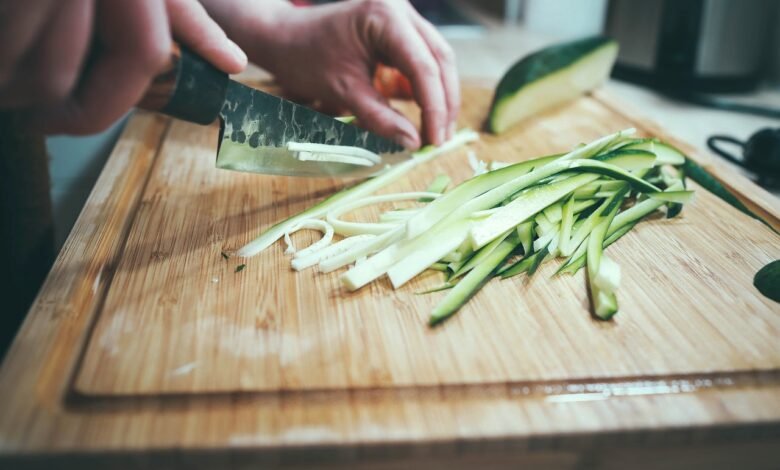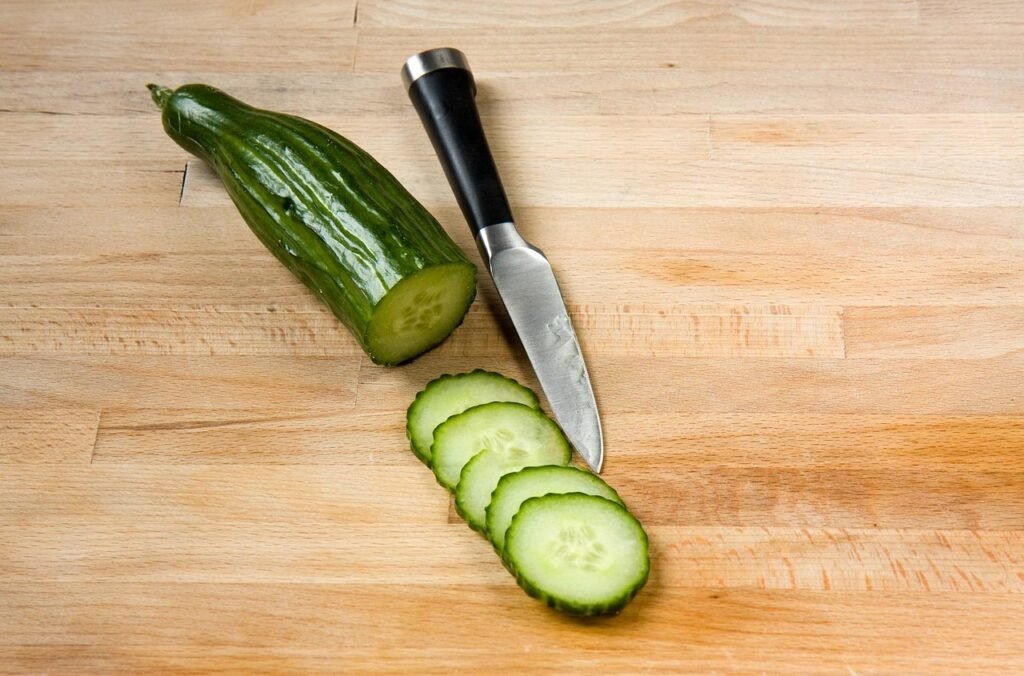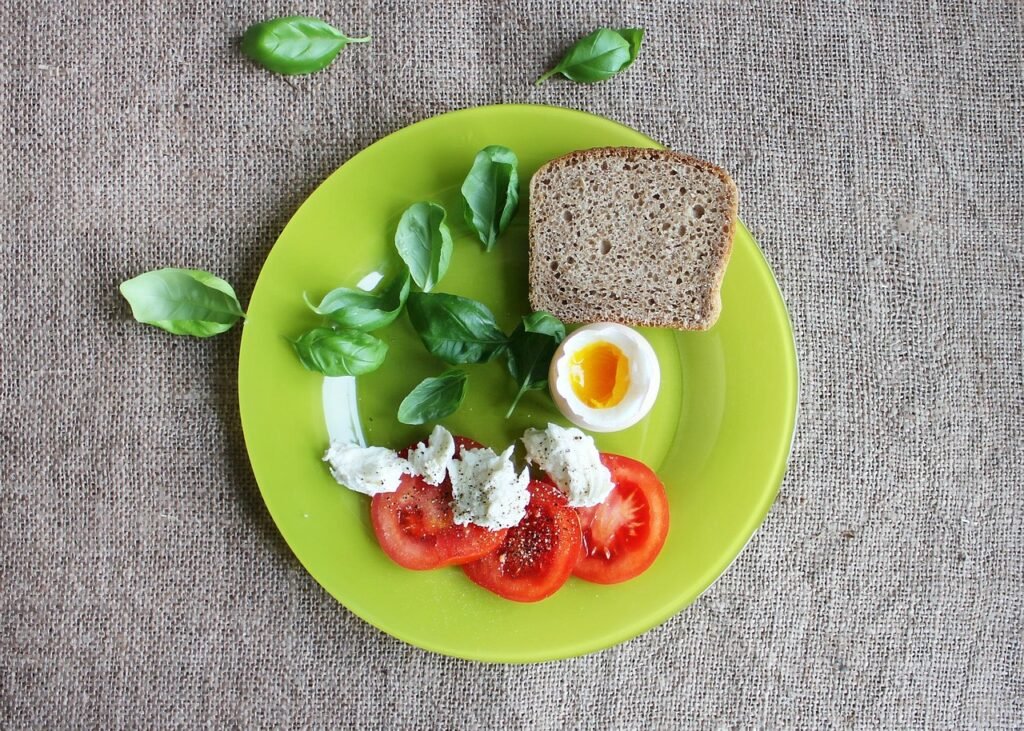How To Quick vegetable chopping techniques for meal prep

Mastering quick vegetable chopping techniques is a game-changer for efficient meal preparation. Whether you’re batch cooking for the week ahead or simply trying to get dinner on the table faster, proper cutting techniques not only save time but also ensure your vegetables cook evenly and look appealing. This comprehensive guide will walk you through the essential skills, techniques, and tips to transform your vegetable prep from tedious to effortless.

Setting Up Your Prep Station
Before diving into chopping techniques, creating an efficient workspace is crucial for streamlining your meal prep process.
Organizing Your Space
- Clear ample counter space for comfortable working
- Position your cutting board on a flat, stable surface
- Keep a trash bowl nearby for scraps and peels
- Arrange containers ready for prepped vegetables
- Have clean kitchen towels accessible for wiping hands and surfaces
Selecting the Right Equipment
The foundation of efficient chopping starts with having the proper tools at your disposal. A sharp knife is not just a convenience—it’s also safer, as dull knives are more likely to slip and cause injuries2.
- Chef’s knife (8-inch): Your go-to for most chopping tasks
- Paring knife: Perfect for detailed work and peeling
- Serrated knife: Ideal for tomatoes and other soft vegetables
- Large cutting board: Provides adequate space for efficient work
- Vegetable peeler: Speeds up peeling tasks considerably
Mastering Basic Knife Skills
The way you hold your knife significantly impacts your chopping efficiency and safety.
Proper Knife Grip
- Pinch the blade where it connects to the handle with your thumb and index finger7
- Rest your other fingers behind the vertical part of the blade
- Maintain a light grip—too tight creates tension and fatigue
- Use your non-knife hand to hold vegetables steady, keeping fingers tucked away from the blade2
Basic Cutting Techniques
Chopping: Cutting vegetables into irregular, coarse pieces1
- Great for vegetables that will be pureed or melt into dishes
- Fastest cutting method requiring less precision
Dicing: Cutting vegetables into uniform cubes1
- Ensures even cooking and attractive presentation
- Essential for stir-fries and roasted vegetable dishes
Slicing: Cutting vegetables into thin, even pieces1
- Perfect for quick-cooking methods like stir-frying
- Allows vegetables to cook evenly and quickly
Julienning: Cutting vegetables into long, thin strips1
- Ideal for salads, slaws, and stir-fries
- Creates an elegant presentation and increases surface area for dressings
Quick Chopping Techniques for Common Vegetables
Onions (60 seconds)
- Cut off the top and root end, then peel away the outer skin1
- Halve the onion from root to tip
- Make horizontal cuts without slicing through the root
- Make vertical cuts from top to bottom
- Slice across the vertical cuts to dice the onion into uniform pieces1
This method utilizes the natural rings of the onion to create perfect dices with minimal effort7.
Carrots (20 seconds)
For quick and efficient carrot prep, choose one of these methods:
For rounds:
- Wash and peel the carrot
- Cut straight across for traditional rounds8
For diagonal slices (cooks faster):
- Hold the carrot at an angle
- Slice diagonally to create oblong pieces8
- These pieces offer more surface area, reducing cooking time3
For dices:
- Cut the carrot into quarters lengthwise
- Cross-cut at desired thickness8
Bell Peppers (40 seconds)
The roll-and-flow technique offers the fastest way to prep bell peppers:
- Cut off the top and bottom of the pepper
- Make a vertical slit down one side
- Open the pepper and lay it flat
- Remove the seeds and white membranes
- Cut into strips or dice as needed7
Cabbage
- Remove outer leaves and rinse
- Halve the cabbage through the core
- Quarter the cabbage
- Angle the knife to cut out the solid core
- Slice or shred to desired thickness1
Broccoli
- Rinse thoroughly
- Cut florets away from the stem
- Trim larger florets into smaller, bite-sized pieces
- Peel and slice the stem for additional usable vegetable1
Advanced Time-Saving Techniques
The Oblique Cut for Faster Cooking
This angled cutting method is perfect for oblong vegetables like carrots, zucchini, and eggplant:
- Begin at the thinner end of the vegetable
- Make your first cut diagonally across the vegetable
- Roll the vegetable 90 degrees so the angle of the cut is flipped
- Make your second cut
- Continue this pattern of rolling and cutting3
This technique increases the surface area exposed to heat, causing vegetables to cook more quickly and evenly.

The Claw Grip for Safety and Speed
- Curl your fingertips under, creating a claw shape
- Use your knuckles as a guide for the knife
- This protects fingertips while allowing for controlled, swift cutting2
Rocking Motion for Efficient Chopping
- Keep the tip of the knife on the cutting board
- Use a back-and-forth rocking motion
- Start slowly and build speed as you become comfortable with the technique2
Tool Comparison for Different Prep Needs
| Tool | Best For | Pros | Cons |
|---|---|---|---|
| Chef’s Knife | Most cutting tasks | Versatile, precise | Requires skill |
| Mandoline | Uniform slices | Fast, consistent thickness | Safety concerns |
| Food Processor | Large batches | Very quick for bulk prep | Less precise, more cleanup |
| Julienne Peeler | Thin strips | Easy to use, minimal cleanup | Limited to certain vegetables |
Batch Prepping Strategies
Batch prepping vegetables can save tremendous time throughout the week. Here’s how to approach it efficiently:
Order of Operations
- Start with the easiest vegetables first and finish with the most difficult and messiest2
- Group similar vegetables that require the same cutting technique
- Tackle onions and garlic last to avoid transferring flavors to other vegetables
Efficient Workflow
- Prep all vegetables requiring the same knife before switching tools
- Keep a large bowl for scraps to minimize trips to the trash
- Use color-coded cutting boards if available to prevent cross-contamination
Storage Solutions for Prepped Vegetables
Properly storing your prepped vegetables is crucial for maintaining freshness and extending usability.
Storage Guidelines
- Store similar vegetables together
- Line containers with paper towels to absorb excess moisture
- Use airtight containers to maintain freshness
- Label containers with prep date
- Keep stored vegetables at the front of the refrigerator as a visual reminder to use them
Storage Duration by Vegetable Type
| Vegetable Type | Refrigerator Storage Time | Best Storage Container |
|---|---|---|
| Leafy Greens | 3-5 days | Airtight with paper towel |
| Root Vegetables | 5-7 days | Airtight container |
| Cruciferous Vegetables | 4-5 days | Airtight container |
| Peppers & Tomatoes | 3-4 days | Ventilated container |
| Onions & Garlic | 5-7 days | Airtight container |
Frequently Asked Questions
How can I prevent my cutting board from sliding while chopping?
Place a damp kitchen towel or paper towel underneath your cutting board to provide grip and stability.
What’s the fastest way to improve my chopping skills?
Practice regularly through batch cooking. Even just an hour of concentrated practice weekly will significantly improve your skills within 6 weeks7.
Are pre-cut vegetables from the store a good alternative?
While convenient, pre-cut vegetables are often more expensive and may not taste as fresh. Learning to cut vegetables yourself offers better quality and value7.
How do I know when it’s time to sharpen my knife?
If your knife struggles to slice through a tomato’s skin or feels like it’s crushing more than cutting, it’s time for sharpening.
What’s the best way to avoid tears when cutting onions?
Refrigerate onions for 30 minutes before cutting, use a sharp knife to minimize cell damage, or cut under running water to wash away the tear-inducing compounds.
How can I make vegetable prep enjoyable rather than a chore?
Play your favorite music, podcast, or audiobook while prepping. Many chefs find chopping vegetables to be almost meditative once they’ve developed their skills.
Is it worth investing in expensive knives?
A good quality chef’s knife is worth the investment, but you don’t need the most expensive one. Focus on a knife that feels comfortable in your hand and that you’ll maintain properly.
Conclusion
Mastering quick vegetable chopping techniques transforms meal prep from a tedious chore into an efficient part of your cooking routine. The key elements to remember:
- Proper knife skills form the foundation of efficient chopping
- Different vegetables benefit from specific cutting techniques
- The way you cut vegetables affects cooking time and results
- Regular practice leads to significant improvement
- A well-organized prep station streamlines the entire process
With these techniques in your culinary arsenal, you’ll save time, reduce stress, and perhaps even find joy in the rhythmic process of vegetable preparation. The benefits extend beyond the kitchen—efficient meal prep encourages healthier eating habits and can significantly reduce food waste.
Remember, cooking should be a pleasure, not a burden. By improving your vegetable chopping skills, you’re investing in better meals and a more enjoyable cooking experience for years to come.

